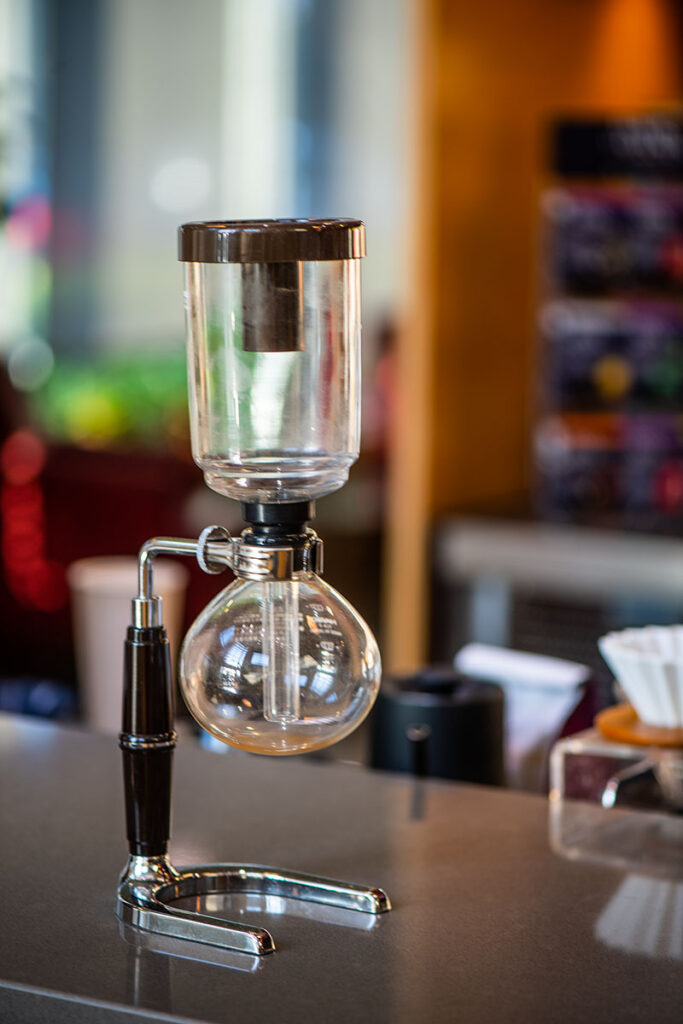Siphon or vacuum brewed coffee, also known as syphon or vacuum pot coffee, is a brewing method that uses a two-chambered glass or metal container, with a filter between the two chambers.

The bottom chamber is filled with water and heated, creating a vacuum that pulls the water up into the top chamber where it brews the coffee. Once the brewing is done, the vacuum is released and the coffee flows back into the bottom chamber.
The history of siphon coffee brewing can be traced back to the early 19th century, when a German scientist named Friedrich von Soxhlet invented a brewing method that used a similar principle of vacuuming the water through the coffee grounds. However, it wasn’t until the 1830s that a Scottish scientist, David Duncan, developed the first siphon brewer that resembled the ones used today.
The vacuum pot coffee brewing method was popular in the North America and Europe in the mid-19th century but fell out of popularity with the advent of the percolator and other more convenient methods of brewing. In recent years, siphon brewing has seen a resurgence in popularity among specialty coffee shops and home enthusiasts, due to the unique and complex flavours that can be achieved through this method.
The siphon brewing method is considered to be a more complex and time-consuming method of brewing coffee, and requires specialized equipment and skill to use. It also requires precise temperature control and timing to ensure a consistent and high-quality brew.
Do you have a term or definition you’d like us to add to the glossary? Let us know using this form.


